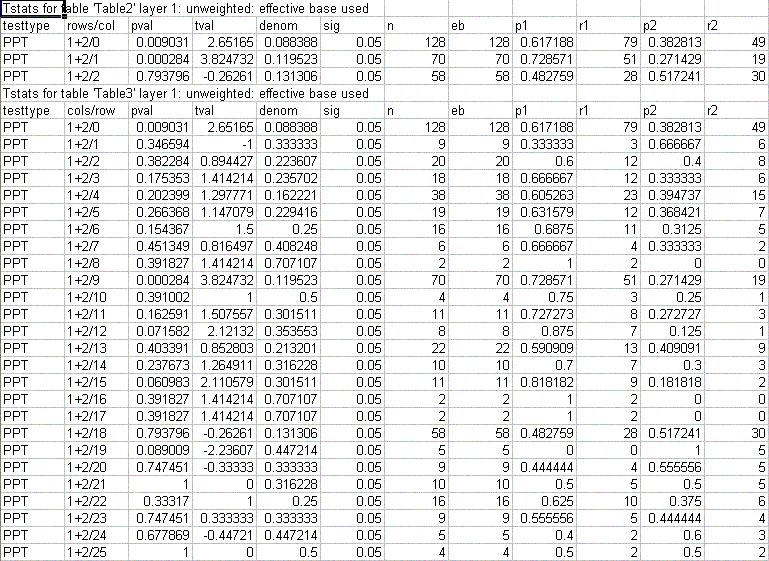Diagnostics information: Paired preference test
When you run a statistical test on a table, UNICOM Intelligence Professional can create diagnostics information that shows the
p values and some of the intermediate figures used to calculate the statistics. The information is in comma-delimited format, so you can open it in Microsoft Excel and perform calculations on the data. The information varies according to the test. Here is the information for the
Examples of the paired preference test.
Diagnostics information for the paired preference test
The paired preference test in this example is specified as a row in the test on Table2 and as a column in the test on Table3. The following information assumes specification as a row.
rows/col
This is in the form a + b / c, where a and b are the rows being tested, numbered starting from 0, corresponding to those displayed in the table, and c is the column being tested, numbered starting from 0, corresponding to those displayed in the table.
pval
The p value.
tval
The t value.
denom
The denominator of the t value.
sig
The significance level selected for the test.
n
The count in the base row for the column. If the table is weighted, this is weighted.
eb
The effective base for the column.
p1, p2
The proportion in rows 1 and 2.
r1, r2
The counts in the two cells.
See also

